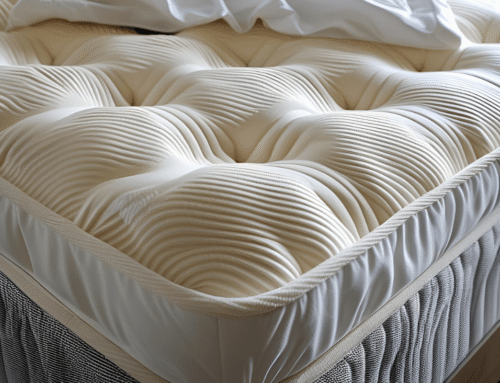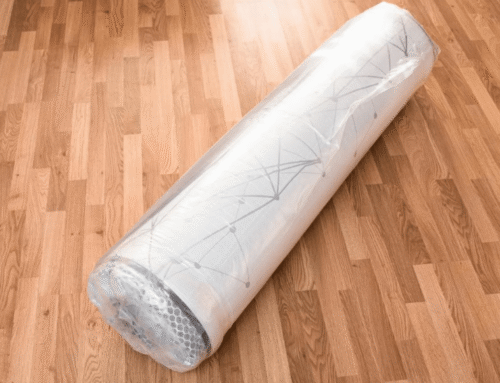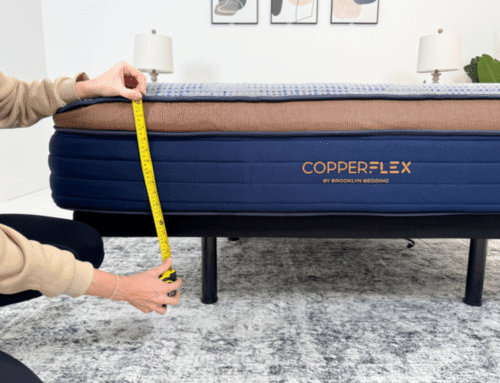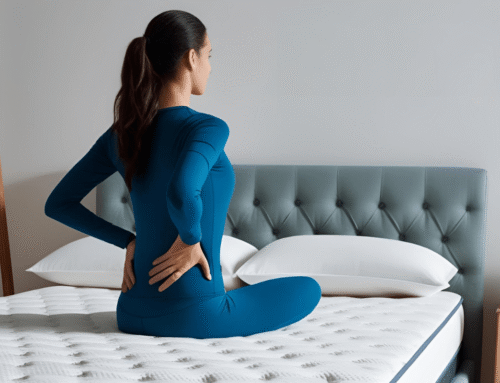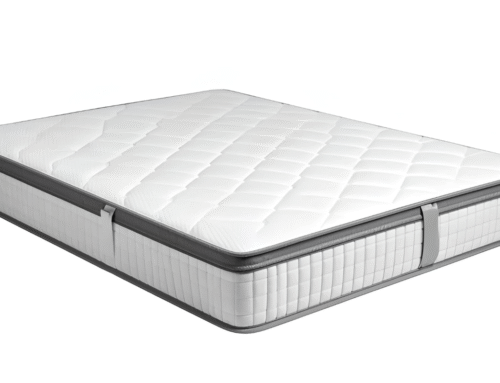Sleeping with back pain is tough, and the wrong mattress can make it worse. A soft one may cause your spine to sink too much, while a firm one can press too hard on your joints. A medium mattress gives support while keeping your back in a natural position. This level of firmness works well for many people but not for everyone. Your weight, sleep position, and comfort needs all affect how a mattress feels. Lighter sleepers may find it too hard, while heavier sleepers could need more support to stay comfortable.
We’ll look at how a medium mattress can help with back pain, who gets the most benefit, and what to think about before deciding if it’s right for you. Understanding how firmness, materials, and sleeping habits affect comfort can help you make a better choice.
Key Takeaways
- A medium mattress provides optimal spinal alignment and softness, which relieves pressure points.
- Medium mattress suits back, side, and combination sleepers, as it offers the right balance of comfort and support.
- Proper spinal alignment and cushioning prevent muscle strain, which eases discomfort when waking up.
- Motion isolation minimizes disturbances, allowing undisturbed sleep despite a partner’s movements.
- Memory foam, hybrid, and latex materials offer different feels and support levels to suit personal preferences.

What Is a Medium Mattress?
Understanding how a medium mattress performs starts with knowing what it is, what it means, and how it feels. What is a medium mattress, what does medium mattress mean, and what does a medium mattress feel like?
A medium mattress sits between soft and firm, usually rated 5-6 on the firmness scale. It gives a balance of comfort and support, which works well for most sleep positions. You get enough cushioning to relieve pressure without losing proper back support. This firmness level feels good if you change positions while sleeping. Side sleepers get gentle cushioning, while back and stomach sleepers stay supported without sinking too much. Couples often like a medium feel since it adjusts to different body types.
The materials affect how the mattress feels over time. Memory foam molds to your body, while hybrids have coils for added support and bounce. Some start firmer but soften as the materials adjust to your weight and movement.
How Firmness Affects Back Pain
A soft mattress feels nice at first, but too much sinking throws your spine out of line. This lack of support strains your muscles, which can lead to soreness in the morning. If you wake up feeling stiff, a softer bed might be the problem.
A firm mattress keeps your back from sinking, so it helps with posture, but it can also press too hard on certain areas. Side sleepers may feel discomfort in their hips and shoulders since there’s not enough cushioning. A firm bed works for some, but it can feel too stiff without some softness.
A medium mattress keeps the spine straight without pressing too hard on pressure points. It gives enough support while still feeling comfortable, which helps with back pain. Many people wake up feeling better with this level of firmness.
Who Should Choose a Medium Mattress for Back Pain?
A medium mattress is often recommended for those needing a balance of comfort and support, but its suitability depends on individual sleep habits and body type. Who should sleep on a medium mattress, is a medium mattress good, and is it good for side sleepers all come down to how well it aligns the spine, relieves pressure points, and adapts to different sleeping positions.
- Back Sleepers – Supports spinal alignment while allowing just enough softness for comfort and reduces pressure on the lower back.
- Combination Sleepers – Adjusts well if you shift positions during the night and provides a balance of support and flexibility without feeling restrictive.
- Side Sleepers (Lighter to Average Weight) – Cushions the shoulders and hips without sinking too much and helps to prevent stiffness in pressure points.
- Couples – Works well for partners with different sleep preferences and provides a middle-ground feel that minimizes major compromises.
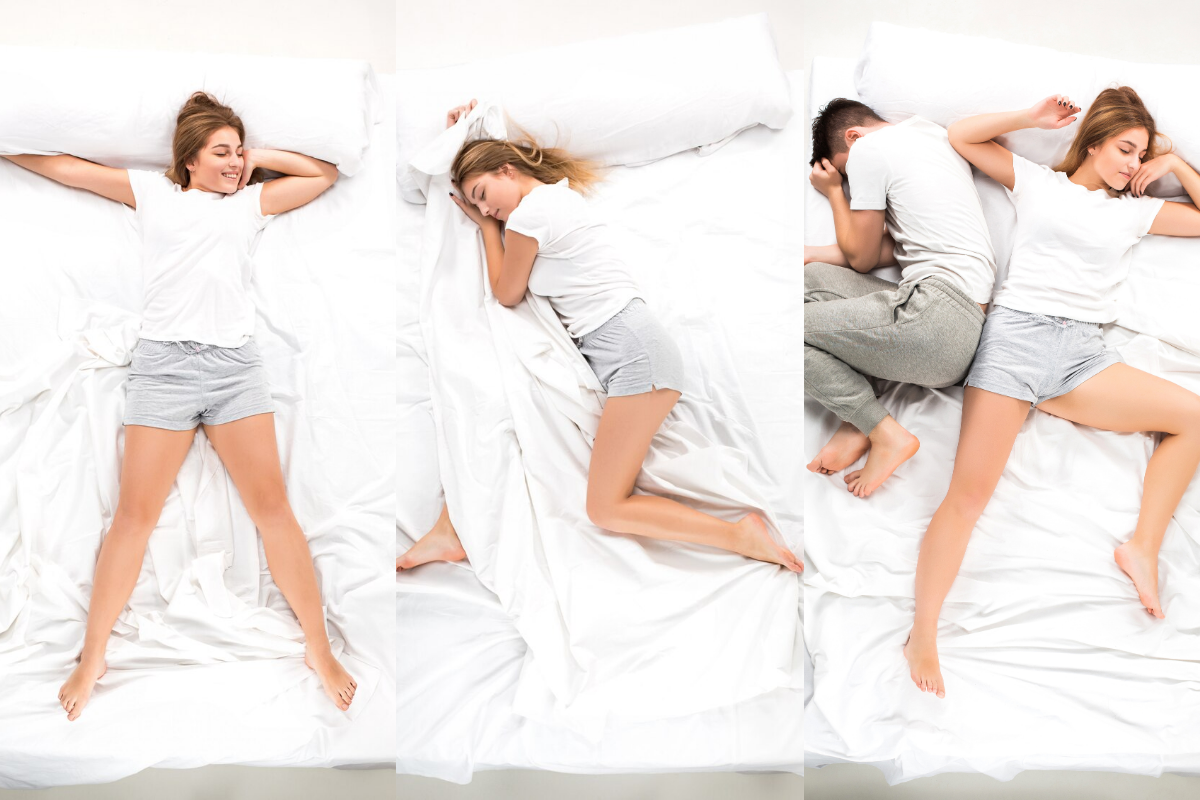
Supports Spinal Alignment
Sleeping on a mattress that is too soft can cause your body to sink, which puts pressure on your spine. A mattress that is too firm pushes against your back, leading to discomfort. Both can leave you feeling sore in the morning. A medium mattress gives enough support without letting your body sink too much. Your spine stays in a more natural position, helping reduce tension in your back. This works well whether you sleep on your back, side, or both.
Better support at night means fewer aches when you wake up. Less strain on your spine helps you sleep more comfortably. Instead of adjusting all night to find a comfortable spot, you get deeper rest and wake up feeling better.
Provides Motion Isolation
Sleeping with someone who moves a lot can be frustrating, but a medium mattress absorbs motion so you don’t feel every toss and turn. This helps you sleep through the night without constant interruptions. You wake up feeling more rested instead of dealing with broken sleep. A firm mattress keeps movement from spreading, but it can feel too hard, especially if you sleep on your side. A soft one feels cozy but doesn’t stop motion as well. A medium mattress sits in the middle and absorbs enough movement while still feeling comfortable.
You won’t wake up every time your partner moves or gets out of bed. The mattress reduces motion so both of you can sleep peacefully. If restless nights are a problem, this helps keep sleep smooth and undisturbed.

Reduces Pressure Points
A medium mattress has the right mix of softness and support, so your shoulders and hips don’t feel pressed too hard. A firm one can leave you sore, while a soft one may throw your spine out of alignment. Waking up with less stiffness feels much better. Good support helps take pressure off your lower back, especially if you move around in your sleep. Instead of waking up achy, your body stays comfortable through the night. The right mattress lets you rest without feeling stuck or strained.
Side and combination sleepers benefit from a medium feel since it cushions joints without sinking too much. If certain spots feel sore in the morning, switching to a medium mattress could ease discomfort. Better support means better sleep.
Enhances Comfort Without Sacrificing Support
A firm mattress can feel too hard, while a soft one might not hold you up enough. A medium mattress sits right in the middle and gives a comfy feel without feeling stiff. You can move around easily without sinking too deep or feeling stuck. If you sleep on your back and side, this level of support helps keep your body in a good position. You won’t wake up with sore spots or feel the need to keep adjusting. It has just enough cushion to feel cozy while still holding up well over time.
This works well whether you like a softer feel or need extra support. It adjusts to your body without feeling too firm or too squishy. Instead of putting pressure on one spot, your weight spreads out evenly so you can sleep without discomfort.
Tips for Choosing the Right Medium Mattress for Back Pain
- Look for Zoned Support: Some mattresses offer extra firmness in the middle and keep your lower back from sinking. This helps maintain proper spinal alignment and reduces discomfort.
- Test the Mattress: Lying down in a store helps, but a good trial period gives you time to see if it truly supports your back. A few weeks of real sleep tells you more than a quick test.
- Consider Your Weight and Sleep Position: Heavier sleepers often need a bit more firmness to prevent sagging, while lighter sleepers usually feel comfortable on a medium surface. Your sleeping position also affects what feels best.
- Check for High-Quality Materials: A mattress with dense foam or strong coils holds up better over time. Quality materials provide steady support, so you don’t wake up with aches.
- Pay Attention to Pressure Relief: A good mattress cushions pressure points while keeping your spine aligned. Too soft can cause sinking, and too firm may add tension to your lower back.

Best Mattress Types for Medium Firmness
Medium mattresses don’t all feel the same since materials affect comfort and support. Memory foam molds to your body and eases pressure on your back and joints, though it holds more heat than other options. It’s a good choice if you want a softer feel that still keeps your spine aligned.
Hybrids combine foam and coils, and give a mix of cushioning and support. The coils help with airflow, so the mattress stays cooler than an all-foam one. This works well if you need back support but don’t want something too firm or too soft. Latex feels firmer than memory foam but has some bounce, so you don’t sink in too much. It stays naturally cool, which helps if you overheat at night. Since latex lasts a long time, the mattress holds its shape without getting lumpy or uneven.
Final Thoughts
If you have back pain, the right mattress can help you sleep better and feel less sore in the morning. A medium mattress gives a good mix of softness and support to keep your spine in a healthy position. It also reduces pressure on your back, so you wake up feeling more comfortable and well-rested.
Your weight and sleeping position affect how well a medium mattress works for you. It’s a good choice for most people with back pain, but stomach sleepers and heavier individuals might need something firmer for better support. A mattress that’s too soft can cause your body to sink too much, which can lead to more discomfort over time.
While a medium mattress offers balanced support, it differs from a plush mattress in terms of firmness and feel. It provides more structure, which helps with spinal alignment, but it may not have the same level of cushioning. There are also some disadvantages, such as less contouring for those who prefer a softer feel and inadequate support for heavier sleepers. In some cases, making a medium mattress firmer by adding a supportive base or a firmer topper can help improve comfort and alignment.
The best way to know if a medium mattress is right for you is to try one with a good return policy. Some mattresses take time to adjust to, so give it a few weeks before deciding. If your back still hurts, it may not be the best fit, and switching to a firmer option could help.

